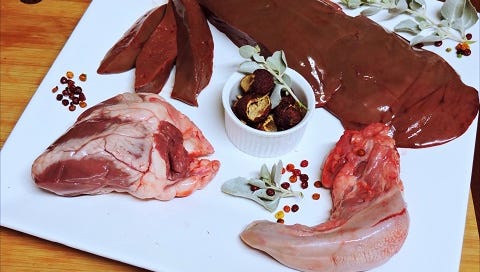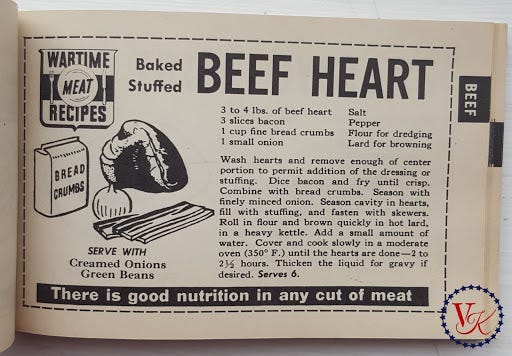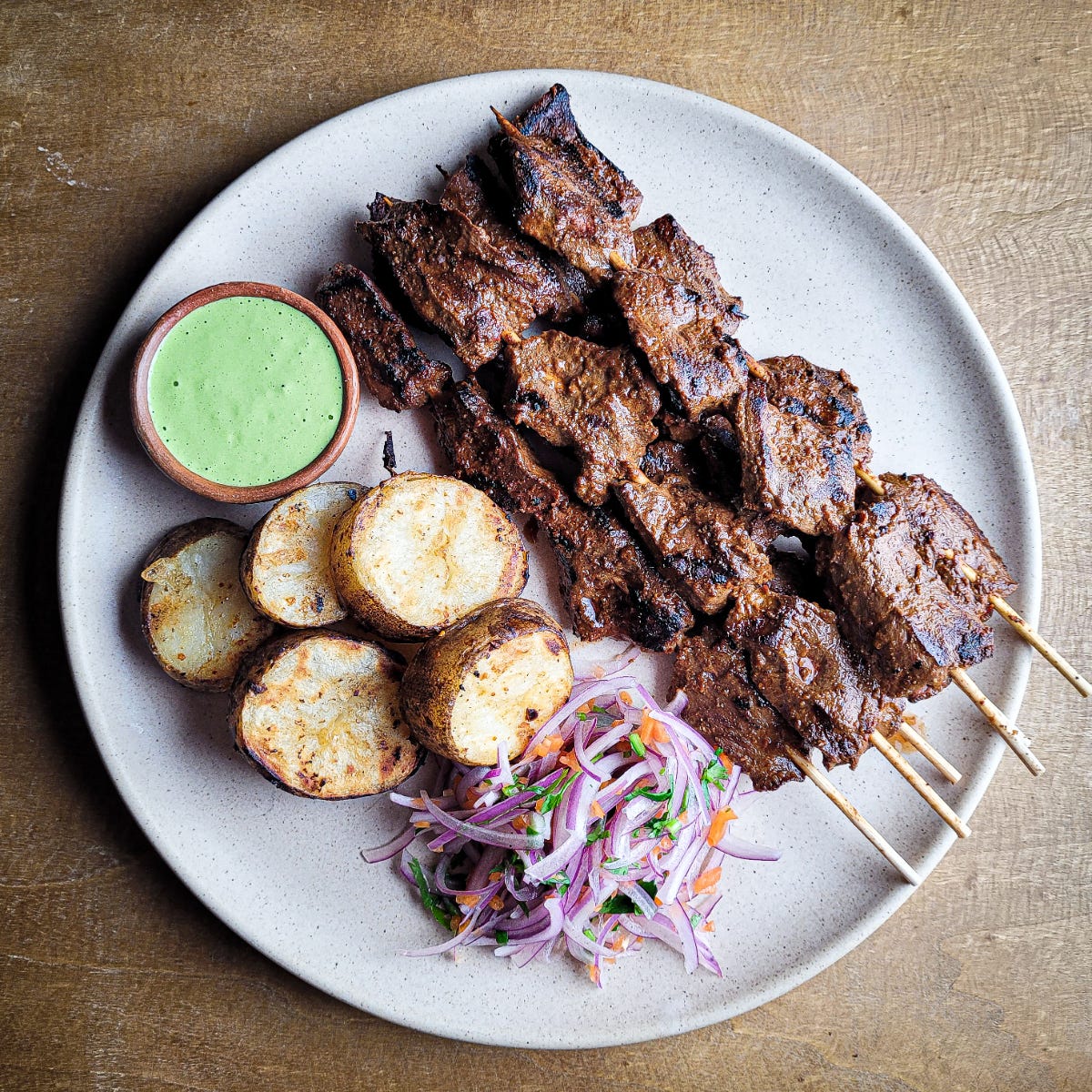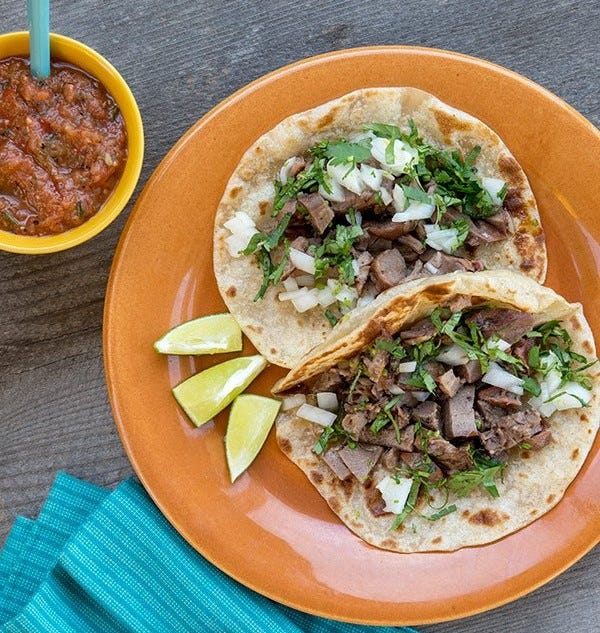Organ Meats: A Guide to Eating Nose-To-Tail Superfoods
Featuring the most nutrient rich foods in the world
Originally used over 350 years ago as a counterweight for measuring grain at markets in what is now modern-day Russia, the kettlebell has also been used as a strength training tool since the 18th century. Not only in Russia, but old-time American strongmen also adopted the kettlebell for use in strength training. Despite this, the kettlebell came out of favor in America. It was used primarily only by people in Post-Soviet states until former Soviet Special Forces Physical Training drill instructor, Pavel Tsatsouline reintroduced the kettlebell to the West in the 1990s when he emigrated to America.
Now the founder of StrongFirst, Pavel started teaching kettlebell classes over twenty years ago to Americans looking to build muscle, lose fat, and build explosive power and strength. The kettlebell can now be found in all gyms across the country. From elite U.S. military professionals to elderly Americans to Brazilian Jiu-Jitsu practitioners, the kettlebell has helped increase health and fitness goals for millions of people.
Similar to kettlebells regaining prominence, the complimentary health powerhouses of organ meats are experiencing a resurgence in the United States. A staple in traditional diets across the globe, as discovered by Dr. Weston A. Price, a dentist known as the “Isaac Newton of Nutrition,” organ meats are the most nutrient dense foods in the world. These traditional cultures were free of eating diets in refined carbohydrates and sugars and had low numbers of ailments such as dental cavities, heart disease, birth defects, etc. often found in modern societies. Apex predators such as wolves and lions even eat the organs of their prey first, before muscle meat, likely due to the high nutrient content.
During World War II, the United States Government ran a campaign to entice Americans to include offal, the culinary term for organ meats, in their diets since most of the beef and pork was being sent to feed the troops in Europe and the Pacific theaters of war.
Ask millennials what their parents grew up eating and organ meats were part of many of the diets. For example, my wife’s father remembers eating a stew of beef heart and tongue. Organ meats are often the cheapest cuts of meat, and many families just starting off in America would include them in their diets. But somehow organ meats seemed to skip our parents’ adult dinner tables.
Outside of the United States though, most cultures throughout the world include organ meats in their diets. One Filipino cuisine blog boasts an article of 39 offal recipes. A close friend with Greek roots also often consumes magiritsa around Easter, a traditional post-Lenten soup that includes all the organs of a lamb.
What are some of the most beneficial organ meats to eat?
Let’s dive in.
Heart: More similar to muscle meat in texture, yet tougher, heart is rich in a variety of vitamins and minerals, and notably a high source of Coenzyme Q10 (CoQ10). There is evidence that CoQ10 may improve conditions of heart failure, diabetes, Parkinson’s disease, migraines, and help with physical performance. CoQ10 has also been shown to have antiaging properties, reducing wrinkles. My wife and I were recently at a Peruvian restaurant and were impressed to find heart skewers on the menu under anticuchos (barbecue).
Liver: Prized in cultures around the world, liver is nature’s multivitamin. Rare for meat, liver is packed with bioavailable vitamin A, and contains rich amounts of Iron, Copper, and Choline – all important for a healthy body. Liver pâté is a common listing at many fine restaurants. Some find the taste delicious and a real treat, but for most, liver can be off-putting which has led to an increase in the availability of desiccated (freeze-dried) liver in capsules.
Bone marrow: Bone marrow is also starting to be more common in restaurants around the country, and this bodes well for health enthusiasts as it is a rich source of collagen. Collagen is important for healthy skin and strong bones and can be hard to get on Western diets. Although care must be taken not to overcook it, when cooked, bone marrow forms a gelatin that can be eaten straight from the bone or used as a yummy spread on bread. It has a rich history in European cuisines, such as the main ingredient in Italian ossobuco (braised veal shanks).
Sweetbreads (Pancreas or Thymus): Known as Mojellas in Latin America, Sweetbreads are revered for their slight creamy taste on the grill in Argentine barbecue or tacos in Mexico. They can also be found in select French restaurants. Sweetbreads are a good source of vitamin B12 as well as essential minerals Potassium, Phosphorous, Zinc, Selenium, and Iron. Interestingly, they are also rich in vitamin C, uncommon for nearly every other cut of meat from an animal.
Kidney: After liver, kidney may be the second most nutrient dense food with some of the highest levels of vitamin B12 as well as vitamin A and other B vitamins. It also has rich amounts of essential minerals including iron, selenium, phosphorous, and copper. Notably, kidney even contains Vitamin D. Kidney is a traditional food in many countries such as Steak and Kidney Pie in Britain and Ireland and the traditional Sesame Oil Kidney Noodle Soup in Taiwan.
Tongue: Tacos de Lengua, or beef tongue tacos are a staple in Mexican street food and are a favorite for many of our Californian friends. For an additional challenge, try ordering the actual tongue from bison or cattle and carving the meat. It is the freshest way to eat tongue and will give one a new appreciation of how our food gets from the farm to the table. Additionally, with a fattier, rich flavor, tongue is rich in nutrients such as Riboflavin, vitamin B12, Choline, and Zinc.
Testicles: Out West, they are known as “Rocky Mountain Oysters” by locals. Although you do not have to eat testicles like Liver King, they are another nutrient rich organ to consume. One of the original promoters of the carnivore diet, a diet consisting solely of meat and zero carbs, Dr. Paul Saladino would regularly consume lamb testicles. They are a great source of the B vitamins and selenium. However, I have not yet had the pleasure of trying them. One day.
Tripe: From the stomach lining of bison, cattle, and sheep, tripe is a staple in many cultures. It is typically found in soups such as Vietnamese Phở, as well as in sausages such as Andouillette sold all over France. It is also a traditional dish in Beijing. Tripe is rich in Zinc, Selenium, and vitamin B12.
Where can I find Organ Meats?
While it is much easier to find organ meats outside of the United States, in America they are challenging to find. However, some ethnic grocery will carry them. One of the surest ways to access organ meats is to custom order from your local butcher or order online. Some of our favorite online retailers that carry organ meats are listed below:
Northstar Bison (Wisconsin)
Rock River Ranches (Colorado)
Vincent’s Meat Market (New York City)
Whispering Meadows (Ontario)
White Oak Pastures (Georgia)
Organ meats may seem off-putting to many, but that may be so if you’ve never had a well-made French pâté or authentic Tacos de Lengua. While they can be utterly disgusting if not well-prepared, when done correctly, they can be a real treat, not only for your taste buds but also for your body’s micronutrient profile. While losing popularity in the latter part of the 20th century in the United States, they are making a comeback in popularity similar to the kettlebell for the analogous reason that both are superior tools for a healthy and strong lifestyle. Knowing that, we challenge you to try some hidden organ meats in well-known dishes, and if that is just really not your thing, try a few kettlebell swings.
👉If you enjoyed this post, feel free to share it with friends!
Related Articles:










Great article. I like to order 20kg of mince or sausages from my butcher and get them to mince in 5% organ meats. They package it into 500g bags for me. Kids and friends have no idea that they’re eating it. Great way to get nutrients into kids.